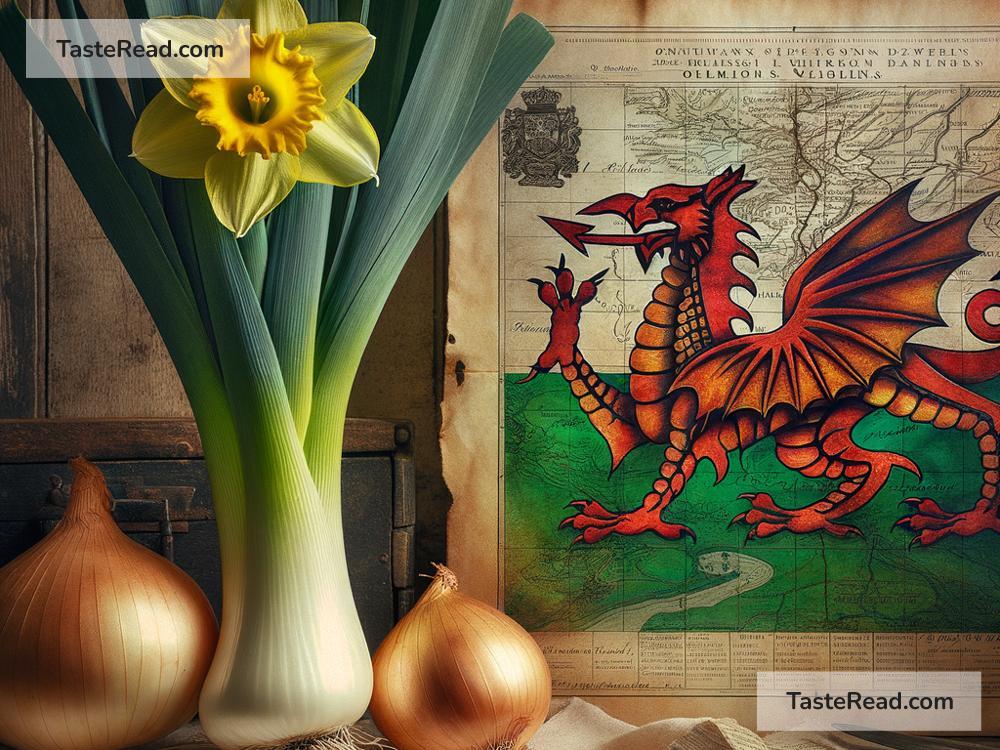The History Behind Leeks as a Symbol of Welsh Pride
When you think of Wales, you might picture its majestic mountains, lively music, or the iconic red dragon on its flag. However, there’s another symbol that holds a special place in Welsh culture – the humble leek. This simple green vegetable has been associated with Wales for centuries and stands as a proud symbol of Welsh identity. But how did a vegetable become such a beloved symbol? Let’s explore the fascinating history behind leeks and their connection to Wales.
The Origins of Leeks in Wales
Leeks are not just a cultural symbol; they have been a staple of the Welsh diet for a very long time. The leek is one of the oldest cultivated plants in Europe, and it thrives in the cool, damp climate of Wales. Farmers grew leeks for their mild flavor and reliable harvest, incorporating them into soups, stews, and other simple dishes. Over time, leeks became an essential part of Welsh cooking and a familiar sight in Welsh gardens.
But the leek didn’t just stay on dinner plates. It grew to represent the Welsh people’s connection to their land and heritage, eventually becoming an important cultural symbol.
The Legend of Saint David and the Leek
One of the earliest stories linking leeks to Welsh identity involves Saint David, Wales’s patron saint. According to legend, Saint David lived during the sixth century and was famous for his deep faith and wisdom. He encouraged the Welsh people to live simple lives, respecting nature and their surroundings.
The leek gained its symbolic significance on the battlefield. As the story goes, Saint David instructed Welsh soldiers to wear leeks in their caps during a battle against invading Saxons. This would help the soldiers recognize each other and separate friend from foe. The Welsh followed his advice and won the battle, securing their land and freedom.
From that moment, the leek became a symbol of strength, unity, and loyalty to Wales. Whether the legend is entirely true or not, Welsh people embraced the story, and the leek became deeply rooted in their national identity.
Historical References to Leeks
The leek’s symbolism is not just based on legend; it appears in historical texts and traditions too. For example, Shakespeare mentioned the leek in his famous play Henry V. In the story, a Welsh captain named Fluellen proudly wears a leek on Saint David’s Day, showcasing his loyalty to Wales.
The tradition of wearing leeks on Saint David’s Day dates back hundreds of years. Even today, on March 1st, many Welsh people pin leeks or daffodils to their clothes to honor their patron saint and celebrate their culture. Schools, shops, and communities fill with cheerful parades, Welsh songs, and the delicious aroma of leek-based dishes.
The National Leek and Welsh Pride
Over time, leeks became more than just a battlefield icon or an ingredient in the kitchen—they started symbolizing Welsh pride. In the 19th century, Wales was becoming increasingly industrialized, and many people moved to cities for work. Amid these changes, cultural symbols like the leek helped preserve a sense of Welsh identity.
The leek was also celebrated in literature, poetry, and artwork, appearing as a motif representing Wales’s enduring spirit. Today, it holds a special place in the hearts of the Welsh and their global diaspora. Whether worn in hats or used in cooking, leeks remind people of their heritage and pride in their nation.
A Symbol That’s Alive and Well
Although traditions often change over time, the leek has never lost its significance in Welsh culture. It stands alongside the red dragon of the Welsh flag and the daffodil as symbols of national pride. But the leek’s story is unique because it connects people not just to their history, but to their land.
The leek continues to thrive in Welsh kitchens, giving flavor to comforting dishes like the famous leek and potato soup. In modern times, it’s even celebrated in sports stadiums, with passionate rugby fans wearing giant leek hats to cheer for their national team!
Why the Leek Matters Today
The leek, though simple and humble, carries a powerful message. It represents Wales’s resilience, unity, and connection to nature. It reminds people to embrace their roots and hold on to their traditions, even in changing times.
In a world that can feel fast-paced and uncertain, the leek is more than just a vegetable—it is part of Wales’s soul. Each Saint David’s Day celebration and every traditional Welsh recipe featuring leeks is a way of keeping that rich heritage alive.
So, the next time you spot a leek in the grocery store or enjoy a warm bowl of leek and potato soup, take a moment to remember its unique history. It’s more than a tasty ingredient; it’s a symbol of pride for the Welsh and a reminder of the incredible stories that connect us to the past.


